we are at the forefront of producing and supplying high-quality industrial and medical gases that drive innovation, fuel growth, and promote well-being. With a rich legacy of excellence and a commitment to cutting-edge technology, we have emerged as a trusted partner for industries worldwide.

Nitrogen is colorless, odorless and generally considered as inert. In its liquid form, nitrogen is also colorless and odorless.
| Formula code: | N2 |
| Cylinder: | Steel |
| Pressure: | 150 bar/200bar |
| Sizes: | 1 Ltr- 80 Ltrs |
| Valve: | BS-3 |
| Purity: | 99.995%- 99.9999% (4.5 - 6.0 Grade) |
| Production Capacity: | 223,000Ltrs per Day (L|N)-24 hours 100 cylinders for 1 hour |
| Usage: | Nitrogen is important to the chemical industry. It is used to make fertilizers, nitric acid, nylon, dyes and explosives.
Large quantities of nitrogen are used in annealing stainless steel and other steel mill products. Annealing is a heat treatment that makes steel easier to work. Liquid nitrogen is often used as a refrigerant. It is used for storing sperm, eggs and other cells for medical research and reproductive technology. It is also used to rapidly freeze foods, helping them to maintain moisture, colour, flavour and texture . |

Is a colorless, odorless gas.
| Formula code: | O2 |
| Cylinder: | Steel/ Aluminum |
| Pressure: | 150 bar/200bar |
| Sizes: | 1 Ltr- 50 Ltrs |
| Valve: | BS-3 / Pin index |
| Purity: | 99.90% |
| Production Capacity: | 50,000 Ltrs LOX in 24 hours 120 cylinders in 1 hour |
| Usage: | The greatest commercial use of oxygen gas is in the steel industry. Is used for oxy-acetylene welding and cutting of metals. A growing use is in the treatment of sewage and of effluent from industry. Medical applications also. |

Is colorless gas Pure acetylene is odorless, but commercial grades usually have a marked odor due to impurities.
| Formula code: | C2H2 |
| Cylinder: | Steel |
| Pressure: | 250PSI (17-18 Bar) |
| Sizes: | 7 Ltr & 40 Ltrs |
| Valve: | BS-4 |
| Purity: | 99% |
| Production Capacity: | 45m3 for 1 hour |
| Usage: | Acetylene is most commonly used in welding and cutting.. It is applied on materials that require temperatures as high as 3,500 degree Celsius for cutting or welding. Acetylene is known for producing the hottest flame. It is for this reason that it is used for heat treating metals and other materials. Production of Chemicals |

| Formula code: | Ar |
| Cylinder: | Steel |
| Pressure: | 150 bar/200bar |
| Sizes: | 1 Ltr- 80 Ltrs |
| Valve: | BS-3 |
| Purity: | 99.995%- 99.9999% (4.5 - 6.0 Grade) |
| Production Capacity: | 1,200 Ltrs LAR in 24 hours 50 cylinders in 1 hour |
| Usage: | Argon Gas mainly used Tig Welding & Laboratory. |

Breathing air is a colorless, odorless gas that is totally inert to other substances. In room temperature its in gases form.
| Formula code: | Air |
| Cylinder: | Steel |
| Pressure: | 150 bar/300bar |
| Sizes: | 1 Ltr- 50 Ltrs |
| Valve: | BS-3 |
| Purity: | 21% of O2. Balance N2 |
| Production Capacity: | 30m3 in 1 hour |
| Usage: | It is the most common using for diving. |

Carbon dioxide (CO2) is a colorless gas consisting of carbon and oxygen. It is also a major greenhouse gas emitted by fossil fuel combustion, according to the Environmental Protection Agency.
| Formula code: | CO2 |
| Cylinder: | Steel/ Aluminum |
| Pressure: | 52 Bar |
| Sizes: | 1 Ltr- 80 Ltrs |
| Valve: | BS-8 |
| Purity: | 99.9%- Gas 99.8% - Liquid |
| Production Capacity: | 24,000 Kgs in (LCO2)-24 hours 13kg /minute for cylinder filling |
| Usage: | Multi-Industry Uses for Carbon Dioxide (CO2): Carbon dioxide in solid and in liquid form is used for refrigeration and cooling. It is used as an inert gas in chemical processes, in the filling in fire extinguishers. |

Dry ice is the solid form of Carbon Dioxide. In laboratories, a slurry of dry ice in an organic solvent is a useful freezing mixture for cold chemical reactions and for condensing solvents in rotary evaporators.The most common use of dry ice is to preserve food, using non-cyclic refrigeration.
It is frequently used to package items that must remain cold or frozen, such as ice cream or biological samples, without the use of mechanical cooling.
Dry ice can be used to flash-freeze food or laboratory biological samples, carbonate beverages, make ice cream, solidify oil spills and stop ice sculptures and ice walls from melting.
| Production Capacity: | 500 Kgs in 1 hour |
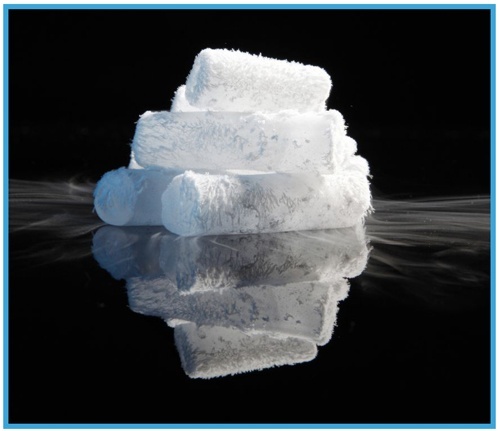
| Formula code: | H2 |
| Cylinder: | Steel |
| Pressure: | 150 bar/200bar |
| Sizes: | 1 Ltr- 50 Ltrs |
| Valve: | BS-4 |
| Purity: | 99.995%- 99.9999% (4.5 - 6.0 Grade) |
| Production Capacity: | 60m3 in 1 hour. (Ind Grade)
60m3 in 1 hour. (High Grade) |
| Usage: | Hydrogen also has many other uses. In the chemical industry it is used to make ammonia for agricultural fertilizer and cyclohexane and methanol, which are intermediates in the production of plastics and pharmaceuticals. It is also used to remove sulfur from fuels during the oil-refining process. Large quantities of hydrogen are used to hydrogenate oils to form fats, for example to make margarine.
In the glass industry hydrogen is used as a protective atmosphere for making flat glass sheets. In the electronics industry it is used as a flushing gas during the manufacture of silicon chips. |

It is a colorless, odorless, tasteless, non-toxic, inert, monatomic gas, the first in the noble gas group in the periodic table. Its boiling point is the lowest among all the elements.
| Formula code: | HE |
| Cylinder: | Steel |
| Pressure: | 150 bar/200bar |
| Sizes: | 1 Ltr- 50 Ltrs |
| Valve: | BS-3 |
| Purity: | Balloon grade - 99.995%- 99.9999% (4.5 - 6.0 Grade) |
| Usage: | Helium is used as a cooling medium for the Large Hadron Collider (LHC), and the superconducting magnets in MRI scanners and NMR spectrometers. It is also used to keep satellite instruments
Because of its low density helium is often used to fill decorative balloons, weather balloons and airships.
Helium is also used to detect leaks, such as in car air-conditioning systems, and because it diffuses quickly it is used to inflate car airbags after impact. Helium-neon gas lasers are used to scan barcodes in supermarket checkouts. A new use for helium is a helium-ion microscope that gives better image resolution than a scanning electron microscope. |

| Cylinder: | Steel |
| Sizes: | 108 Ltrs (44 Kgs) |
| Valve: | BS-14 |
| Purity: | 99.95% (3.5 Grade) |
| Usage: | Used in Petrochemical Industry, Heating, Water Proofing, used as fuel gas supplement in Butane Restricted Sites. |

Anhydrous Ammonia is a compound of nitrogen and hydrogen with the formula NH3. Ammonia is a colourless gas with a characteristic pungent smell.
| Formula code: | NH3 |
| Cylinder: | 50 Ltr Steel |
| Sizes: | 50 Kgs , 60 Kgs |
| Valve: | BS-3 |
| Purity: | 99.95% (3.5 Grade) |
| Usage: | About 90 percent of ammonia produced is used in fertilizer, to help sustain food production for billions of people around the world. The production of food crops naturally depletes soil nutrient supplies. In order to maintain healthy crops, farrely on fertilizers to keep their soils productive. Fertilizers also can also help increase levels of essential nutrients like zinc, selenium and boron in food crops. |
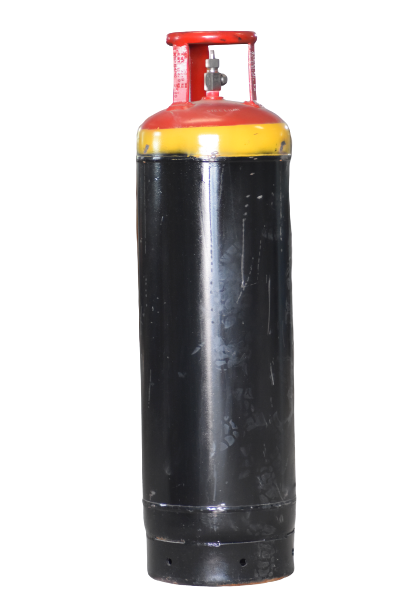
| Formula code: | C3H3 |
| Drum: | 450 Ltrs (192.5 Kgs) |
| Purity: | 99.95% (3.5 Grade) |
| Usage: | Propylene is an attractive alternative to propane for heating and cutting due to its superior combustion performance. It is also widely used as a fuel gas for high-velocity oxygen fuel (HVOF) processes. In addition, the chemical and plastics industries rely on propylene as a fuel gas. Propylene can be polymerized to form polypropylene plastic. It can also be employed as a refrigerant, or in calibration mixtures and as a chemical intermediate. In addition, it is used for efficiency testing of gas burners and engines. |

Carbon monoxide (CO) is a colorless, odorless, and tasteless gas that is slightly less dense than air.
It is toxic to hemoglobic animals (both invertebrate and vertebrate, including humans) when encountered in concentrations above about 35 ppm.
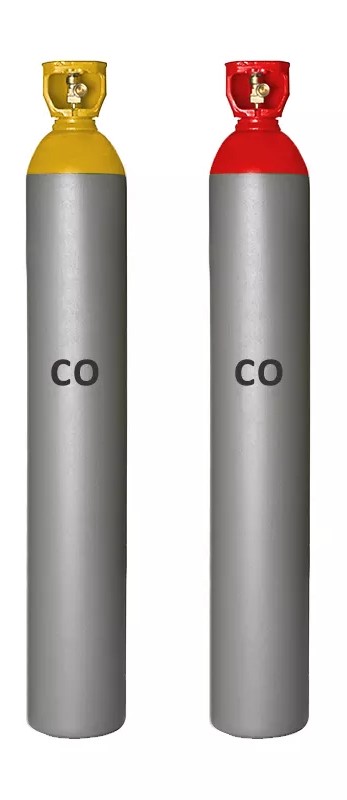
SF6 is a synthetically produced gas. The SF6 molecule consists of one sulphur atom surrounded by six fluoride atoms. Pure SF6 is physiologically completely harmless. It has no ecotoxic potential and does not destroy the ozone layer. But low purity is harmful.
| Purity: | 99.9% , 99.99%,99.999% (3.0 - 5.0 Grade) |
| Usage: | SF6 is used in gas insulated switchgear and other electric power equipment such as bus bars. The use of SF6 gas enables to build switchgear that are compact, require a small amount of material and guarantee high switching capacity and equipment safety. |

Chemical refrigerants are assigned an R number which is determined systematically according to molecular structure. Common refrigerants are frequently referred to as Freon.
They are stable, non flammable, moderately toxic gases or liquids which have typically been used as refrigerants. These include the chlorofluorocarbons
(CFCs) that cause ozone depletion (such as chlorodifluoromethane), and Hydrochlorofluorocarbons (HCFC). But Not all refrigerants of this type.
Refrigerant Gases are been supplied in Disposable and Refillable Cylinder with 56 kgs up to 1000 kgs drum.

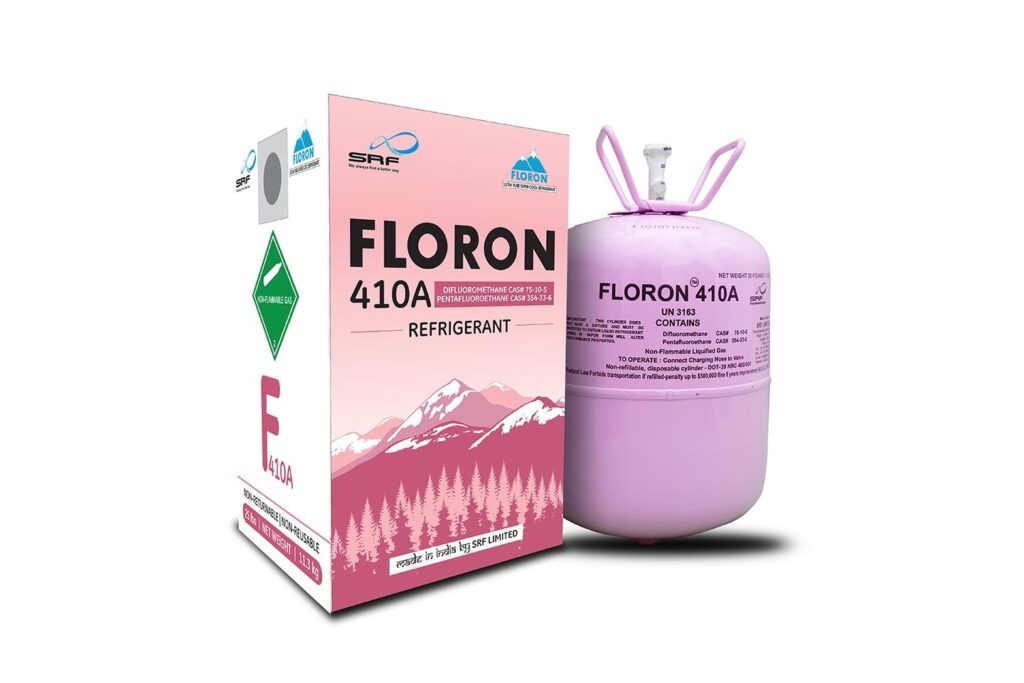
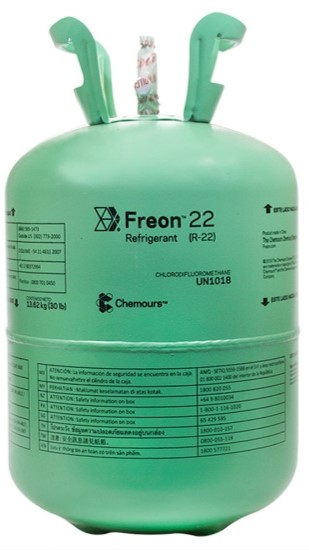
Oxygen may be used for patients requiring supplemental oxygen via mask. Usually accomplished by a large storage system of liquid oxygen at the hospital which is evaporated into a concentrated oxygen supply, pressures are usually around 345-380 kPa (50-55 psi),[or in the UK and Europe, 4-5 bar (approximately 58-72 psi).[This arrangement is described as a vacuum insulated evaporator (VIE) (VIE) or bulk tank.[ In small medical centers with a low patient capacity, oxygen is usually supplied by a manifold of multiple high-pressure cylinders. In areas where a bulk system or high-pressure cylinder manifold is not suitable, oxygen may be supplied by an oxygen Concentrator. However, on site production of oxygen is still a relatively new technology.
| Formula code: | MO2 |
| Cylinder: | Steel/ Aluminum |
| Pressure: | 150 bar/200bar |
| Sizes: | 1 Ltr- 50 Ltrs |
| Valve: | BS-3 / Pin index |
| Purity: | 99.5% (2.5 Grade) |
| Usage: | Medical gas required in every healthcare setting, and is used for resuscitation and inhalation therapy . |

Medical air is used for a variety of patient applications. Many patients sensitive to oxygen toxicity are delivered air to lower their exposure to oxygen. Many of these patients have extremely delicate respiratory systems or processes which rely on a pure, accurate concentration of medical air.
| Formula code: | MAIR |
| Cylinder: | Steel/ Aluminum |
| Pressure: | 150 bar/200bar |
| Sizes: | 1 Ltr- 50 Ltrs |
| Valve: | BS-3 / Pin index |
| Purity: | 99.995% (4.5 Grade) |
| Usage: | The main uses of medical air in the hospital are: driving ventilators and incubators, where it provides uncontaminated and controlled air flows helping to reduce high concentration of oxygen exposure as a carrier gas for anaesthetic agents as a power source for driving surgical tools in the operating theatre. |
| Formula code: | N2O |
| Cylinder: | Steel |
| Pressure: | 50.8 Bar |
| Capacity: | 42 Ltrs (20 Kgs), 47 Ltrs (30 Kgs) |
| Valve: | BS-13/ CGA 965 |
| Purity: | 99.5% (2.5 Grade) |
| Usage: | It is used as a medical anesthetic and analgesic, to cause loss of sensation or consciousness during surgery or pain relief, as a rocket fuel propellant, to increase thrust and speed, as a food aerosol to whip cream or other products. |
| Nitrous Oxide: | 50% |
| Oxygen: | 50% |
| Cylinder: | Steel |
| Capacity: | 1-50 Ltrs |
Established in 1952 by its visionary founder Mr. Mohd. Hamad Almana, National Industrial Gas Plants is a proud member of Al Mana Aldawlyah Holding of Companies. Our state-of-the-art facility produces a comprehensive range of industrial gases, including Nitrogen, Oxygen, Argon, Carbon Dioxide, Breathing Air, Acetylene, Nitrous Oxide, Hydrogen, Mixture Gases, and High Purity Calibration Gases, all manufactured under one roof.